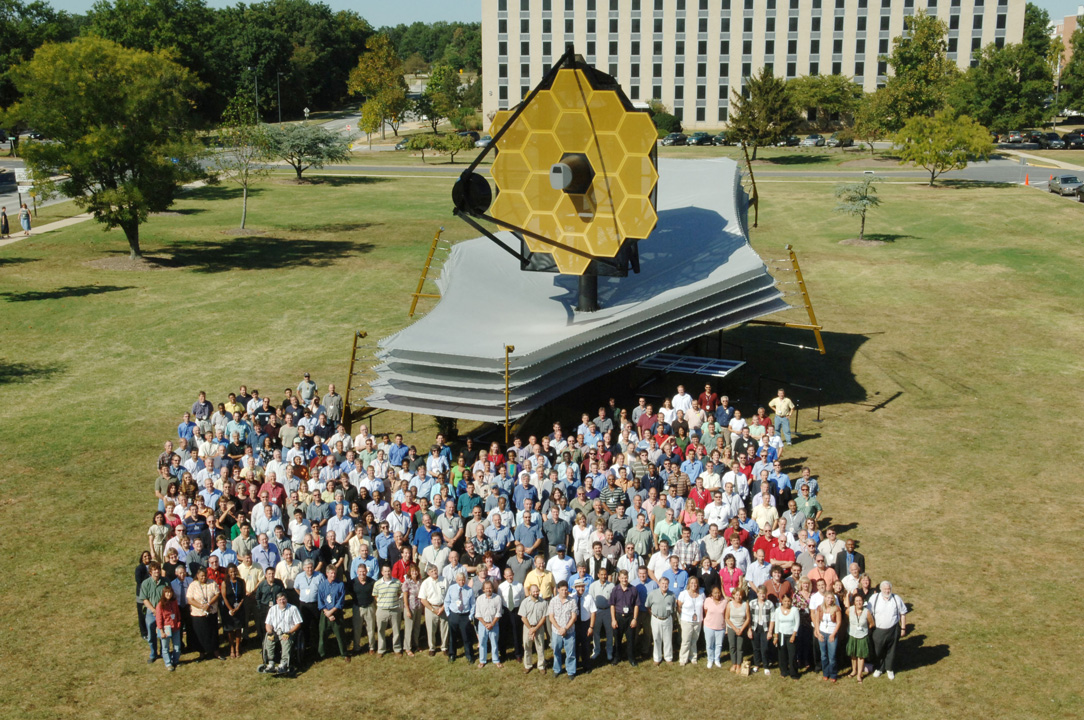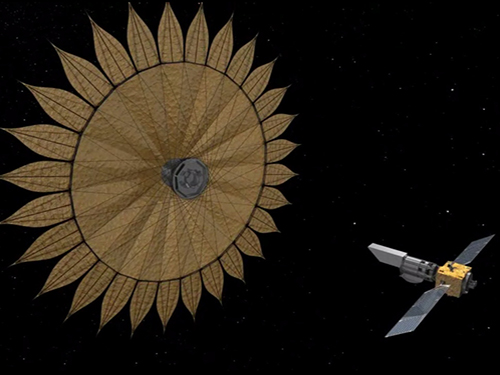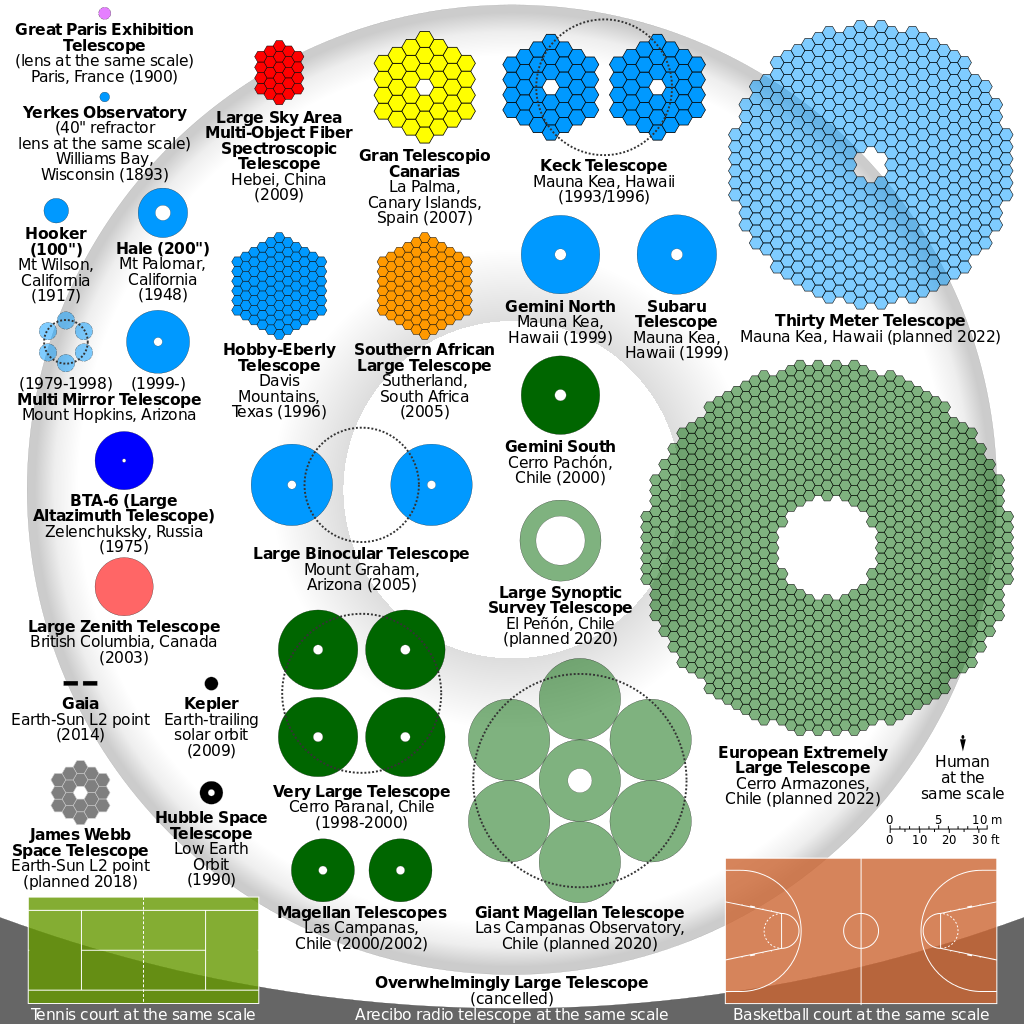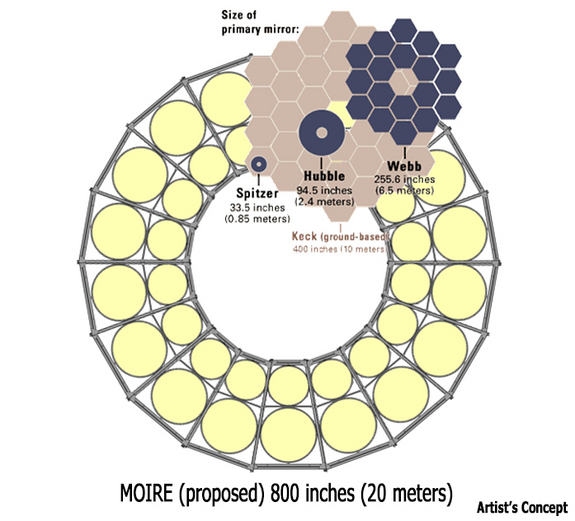It looks like you're using an Ad Blocker.
Please white-list or disable AboveTopSecret.com in your ad-blocking tool.
Thank you.
Some features of ATS will be disabled while you continue to use an ad-blocker.
5
share:
we are getting an new generation of telescopes that should be capable of detecting signs of life on planets around other stars. Well great -but you
have to know what to look for. These scientists are working on the what to look for part. Of course you can speculate that other life might not look
anything like life on our planet but there are reasons to assume otherwise. chemistry being one of them. besides if we find other life (life not very
much like our own examples) it will be an accident. we can't plan for the unknowable. Few chemical arrangements have the power and diversity of carbon
based chemistry. and systems that conserve information like DNA and can be diverse enough to support life are very very very rare. all known
contenders just aren't as versatile as carbon. no biological information system is as versatile as RNA/DNA. DNA can even have different amino acid
code words but is still DNA. We know in the long history of evolution some traits have independently arisen in unrelated organisms. these independent
traits have genes that are never the less the same between unrelated species. if you need eyes; there are only so many ways to code for eyes.
therefore that critter over there will have those genes since he has eyes just like this critter over here. Now the eye may have a difference sclera
or iris shape or color, or an extra layer or different receptor cells. but it will still have the same basic code at some level with the rest just
being layered on that base.
These scientists have been busy characterizing the reflected light of various organisms from trees to alga to microbial mats. the idea is if a future telescope sees these particular colors in another planets atmosphere (along with other signatures of course) there is a good chance that there is life of a similar type there.
phys.org...
These scientists have been busy characterizing the reflected light of various organisms from trees to alga to microbial mats. the idea is if a future telescope sees these particular colors in another planets atmosphere (along with other signatures of course) there is a good chance that there is life of a similar type there.
phys.org...
edit on 16-3-2015 by stormbringer1701 because: moar stuff.
My friend, I appreciate the effort and thought of sharing information to the community.
But.
Please use paragraphs and spacing in your OP. It's rough to try and read through a wall of letters on a mundane grey background.
Not trying to nitpick, but we are the ones reading what you have presented, just make it better readable
Thanks for sharing
But.
Please use paragraphs and spacing in your OP. It's rough to try and read through a wall of letters on a mundane grey background.
Not trying to nitpick, but we are the ones reading what you have presented, just make it better readable
Thanks for sharing
a reply to: stormbringer1701
Humor aside I always have issues when scientists talk about life. Specifically our baselines on where and how to look are based solely on our own experience. To assume the same conditions on earth are found on other planets seems to back us into an exploration corner that we will find difficult to get out of.
along the lines of look, this planet around this star has these readings however since it doesn't conform to life on earth we wont worry about them as they cant possibly be life.
We assume water must exist for their to be life and if there is no water then life cant possibly be present. Same goes for where a planet is located compared to its parent star.
while I understand the reasons we use ourselves as a base line, I think we rely to heavily on that baseline.
Humor aside I always have issues when scientists talk about life. Specifically our baselines on where and how to look are based solely on our own experience. To assume the same conditions on earth are found on other planets seems to back us into an exploration corner that we will find difficult to get out of.
along the lines of look, this planet around this star has these readings however since it doesn't conform to life on earth we wont worry about them as they cant possibly be life.
We assume water must exist for their to be life and if there is no water then life cant possibly be present. Same goes for where a planet is located compared to its parent star.
while I understand the reasons we use ourselves as a base line, I think we rely to heavily on that baseline.
edit on 16-3-2015 by Xcathdra because: (no reason given)
a reply to: stormbringer1701
Closest exoplanet (according to a google search!) is several light years away. What is the point of all this waste of academic money om something we cannot reach? Or has someone been hiding FTL or wormhole drives from the public eye...?
Closest exoplanet (according to a google search!) is several light years away. What is the point of all this waste of academic money om something we cannot reach? Or has someone been hiding FTL or wormhole drives from the public eye...?
originally posted by: Xcathdra
We assume water must exist for their to be life and if there is no water then life cant possibly be present. Same goes for where a planet is located compared to its parent star.
while I understand the reasons we use ourselves as a base line, I think we rely to heavily on that baseline.
It isn't true at all that science feels that "since conditions don't conform to life on earth, we wont worry about that planet, as they cant possibly have life". Science freely admits that carbon-based life that requires water is NOT the only possible life out there...
However, with our limited methods for searching for life, the easiest life for us to actually find would be "life as we know it". That's because "Life as we don't know it" would be difficult to find, because we wouldn't know how to create the tests that would conclude "life as we don't know it" is present.
There are some interesting ideas for finding such "life as we don't know it". One example would be looking for dis-equilibriums of chemical compounds on other worlds that cannot be explained through non-life means. NASA's Chris McKay has suggested that certain dis-equilibriums of hydrogen and acetylene on Saturn's moon Titan may indicate the presence of methane-based life that is consuming that hydrogen and acetylene -- although he admits that there could be non-life processes as well that could explain it.
What is Consuming Hydrogen and Acetylene on Titan?
excerpt:
This lack of acetylene is important because that chemical would likely be the best energy source for a methane-based life on Titan, said Chris McKay, an astrobiologist at NASA Ames Research Center, Moffett Field, Calif., who proposed a set of conditions necessary for this kind of methane-based life on Titan in 2005. One interpretation of the acetylene data is that the hydrocarbon is being consumed as food. But McKay said the flow of hydrogen is even more critical because all of their proposed mechanisms involved the consumption of hydrogen.
"We suggested hydrogen consumption because it's the obvious gas for life to consume on Titan, similar to the way we consume oxygen on Earth," McKay said. "If these signs do turn out to be a sign of life, it would be doubly exciting because it would represent a second form of life independent from water-based life on Earth."
So science and NASA actually do think non-earth-like life could be out there. They just aren't sure if they would know it to see it.
edit on 3/16/2015 by Soylent Green Is People because: (no reason given)
a reply to: Elementalist
It's not that bad, I've seen much worse.
This is an exciting topic. Imagine once we have detected a planet with signatures of life then we can point more telescopes at it and even SETI. I'll still be shocked that if we discover ET life but have not been visited yet, accidentally received some signal, or spotted an alien space ship in our solar system first. Just seems so weird to me.
Does the Fermi Paradox apply to exoplanet research? Because I hear crickets when it comes to the Fermi Paradox and exoplanet research, but not the other way around with visitation.
It's not that bad, I've seen much worse.
This is an exciting topic. Imagine once we have detected a planet with signatures of life then we can point more telescopes at it and even SETI. I'll still be shocked that if we discover ET life but have not been visited yet, accidentally received some signal, or spotted an alien space ship in our solar system first. Just seems so weird to me.
Does the Fermi Paradox apply to exoplanet research? Because I hear crickets when it comes to the Fermi Paradox and exoplanet research, but not the other way around with visitation.
originally posted by: LightSpeedDriver
a reply to: stormbringer1701
Closest exoplanet (according to a google search!) is several light years away. What is the point of all this waste of academic money om something we cannot reach? Or has someone been hiding FTL or wormhole drives from the public eye...?
firstly; even if we never get there we will develop instruments that can read some alien chick's tramp stamp from 100 light years away. Secondly we will get there even if we never develop warp drive or wormholes.
physics says we cannot do it with chemical propulsion and the technology is not here yet to get the speeds that would make it worthwhile. if we do get the technologically means to go it will take so long that we need these developments to make sure there is something to make it worth our time to go to the trouble. That's what these scientists are doing.
but provided we have a reason to go there sub light speeds will not stop us. at 10 percent c a trip to three different stars would take just 40 years. Voyager 1 and 2 have been a program for 36 or so years. we have had people monitoring that space voyage that long already. There is no rational way you can think a 40 year project isn't doable when we are already doing one now.
originally posted by: Xcathdra
a reply to: stormbringer1701
Humor aside I always have issues when scientists talk about life. Specifically our baselines on where and how to look are based solely on our own experience. To assume the same conditions on earth are found on other planets seems to back us into an exploration corner that we will find difficult to get out of.
along the lines of look, this planet around this star has these readings however since it doesn't conform to life on earth we wont worry about them as they cant possibly be life.
We assume water must exist for their to be life and if there is no water then life cant possibly be present. Same goes for where a planet is located compared to its parent star.
while I understand the reasons we use ourselves as a base line, I think we rely to heavily on that baseline.
when it comes to non technologically enabled life forms the ones we have the best chance of spotting are those that are similar to known lifeforms. that is not to say we will not be looking for them. and we will also be looking for technological signatures as well.
but even if there are silicon creatures or fire elementals living in suns or pico scale life on neutron stars chances are we won't see them first.
we are infact considering life not like us for example methane based life on exomoons and even here in this star system. My article just covers one aspect of the hunt. it is not intended to include all disparate approaches. that would be a lot more cumbersome than my OP.
originally posted by: LightSpeedDriver
Closest exoplanet (according to a google search!) is several light years away. What is the point of all this waste of academic money om something we cannot reach? Or has someone been hiding FTL or wormhole drives from the public eye...?
Curiosity, I guess. And the money isn't really "wasted." Machines are built and academics get paid and support their families. It's not like we don't have plenty of money to throw around.
No, we'll never be able to actually go there, but we can incorporate some of the data into our videogames, maybe.
i have problems with the logic behind the fermi paradox. it violates the axiom absence of evidence is not evidence of absence. and those that use it as an argument against exo life do seem to not be open to consider UFO lore even the most credible accounts as evidence. They also seem to think if an alien did colonize space they would do it in the same mindless way a bacteria colony would rather than having intelligent direction and goals so as not to waste resources and time. maybe they are eco nuts that don't believe in disturbing the natives. maybe they really are "fire elementals" that inhabit stars and don't give a flying damn about rocky worlds. maybe they are floaters and like gas giants. maybe they are made of hot molten silicon and need planets close enough to a star to remain molten or else live in the mantles and cores of rocky worlds. maybe they are made out of monopole or similar matter and thus are too small to be detected but thrive on neutron stars.
originally posted by: game over man
a reply to: Elementalist
It's not that bad, I've seen much worse.
This is an exciting topic. Imagine once we have detected a planet with signatures of life then we can point more telescopes at it and even SETI. I'll still be shocked that if we discover ET life but have not been visited yet, accidentally received some signal, or spotted an alien space ship in our solar system first. Just seems so weird to me.
Does the Fermi Paradox apply to exoplanet research? Because I hear crickets when it comes to the Fermi Paradox and exoplanet research, but not the other way around with visitation.
edit on
16-3-2015 by stormbringer1701 because: (no reason given)
within a limited area (about ten to 15 LY) we really can go there without FTL. We cannot go further (than about ten light years or so) without FTL or without losing cohesion as a unified civilization but thats not the same as saying we cannot go there.
originally posted by: Blue Shift
originally posted by: LightSpeedDriver
Closest exoplanet (according to a google search!) is several light years away. What is the point of all this waste of academic money om something we cannot reach? Or has someone been hiding FTL or wormhole drives from the public eye...?
Curiosity, I guess. And the money isn't really "wasted." Machines are built and academics get paid and support their families. It's not like we don't have plenty of money to throw around.
No, we'll never be able to actually go there, but we can incorporate some of the data into our video games, maybe.
Biding my time, tapping my toes, counting sheep, until JadeStar arrives to give her perspective and data on the question. Did somebody say Data?


edit on 16-3-2015 by Aleister because: (no reason given)
originally posted by: Xcathdra
a reply to: stormbringer1701
Humor aside I always have issues when scientists talk about life. Specifically our baselines on where and how to look are based solely on our own experience. To assume the same conditions on earth are found on other planets seems to back us into an exploration corner that we will find difficult to get out of.
I see this often said and you should know two things: 1) No such assumptions are made - We know the similar conditions are probably found on other planets similar to Earth given a similar atmosphere and similar absorbed radiation. 2) Because of Kepler we know such planets are not rare but could be as commonly orbit anywhere from 20-50% of stars in our Galaxy (depending on the type of star it orbits). 3) Without baselines a search for anything is nearly impossible.
You have to start with what you know exists with a thought towards what might also exist. If you don't have a baseline of what to look for then you can't really effectively search can you?
It's like saying "i'd like to find something to write with" and then instead of looking for things you know you can write with you look for anything and everything which might have a point.
We know that life on Earth has certain characteristics which may be detectable on other worlds so why not start with the low hanging fruit? It's not like the conditions on Earth are special. There are billions of other planets in or galaxy which will have similar conditions.
along the lines of look, this planet around this star has these readings however since it doesn't conform to life on earth we wont worry about them as they cant possibly be life.
If there is anything anomalous about such readings which couldn't be explained as abiotic in nature but it looked nothing like life on Earth you can bet such a planet wouldn't be ruled out, it would be studied intensely.
We assume water must exist for their to be life
No one in astrobiology assumes this, it's just that water is one of the most common molecules in the universe and it is also one of the most useful so it makes sense to look for life in places with water because we know life can thrive in such an environment.
Even in the driest deserts on Earth life we find there still requires some water. But that doesn't stop us from looking at places like Titan where the seas are made of methane and the water is frozen solid as "land".
Same goes for where a planet is located compared to its parent star.
Because life is governed by the laws of chemistry and physics. Too hot and complex chemical bonds which lead to life break down. Too cold and the chance of them forming anything complex go way down.
Even then then that is just one definition of the ever evolving concept of a habitable zone. There are probably other types of habitable worlds other than ones at the right distance from the star for liquid water to be on its surface simply from received heat.
The effect of an atmosphere is also important. If Venus with its heavy CO2 atmosphere were where Mars was it might well have Earthlike temperatures.
Also moons orbiting gas giant planets far from their star can be tidally heated to have subsurface oceans or in some cases (if the moon and planet orbit just beyond the "snow line") an earthlike surface temperature (given a similar atmosphere).
while I understand the reasons we use ourselves as a base line, I think we rely to heavily on that baseline.
Again, if you think about it its logical. We have explored planets in our own solar system quite unlike our own but we don't see life in the clouds of Jupiter, or on the surface of Mercury.
This is as much based on what we know about the other worlds in our own solar system as much as what we know about our own planet.
If life were easy to thrive in such places then we'd have found it by now in our own solar system. The fact that we haven't is why there is much excitement about these "alien earths" around other stars.
Alien Jupiters aren't that interesting from a life point of view other than perhaps hosting a moon with life.
edit on 17-3-2015 by JadeStar
because: (no reason given)
originally posted by: Aleister
Biding my time, tapping my toes, counting sheep, until JadeStar arrives to give her perspective and data on the question. Did somebody say Data?
originally posted by: stormbringer1701
i posted this in part to see what she would say about it
Well I'm here now. Better late than never? Any questions?
The best thing about this is, in my opinion is that this work has been done well in advance of having the telescopes large enough which will be able to detect such life.
Why is this important?
Because many instruments to go on such telescopes are still being designed right now as the telescopes are being constructed.
It is much better to design an instrument like a high resolution spectrograph knowing the wide range of things it may have to detect than to blindly build one only to find out that it can not detect the spectra from half the life that this database of spectra makes up.
BTW: For those who are really into this stuff the database is online here: biosignatures.astro.cornell.edu...
And the Institute for Pale Blue Dots site is here: instituteforpalebluedots.com...
Also of interest is that such spectrographs sensitive enough to detect such biosignatures might also detect technosignatures such as molecules which can only be artificially produced....
If you want some interesting discussion around that, let me know, it's something I'm currenly researching.
edit on 17-3-2015 by JadeStar
because: (no reason given)
"Stalker aproaching"
Silly me...
But how booring wouldnt it be, to interact with a rockppl living
in somekind of metasituation, inside a lavariver on a small
planet. I think the reason they dont or might not be looking for "life"
on the broader spectrum is, what would we have in comon??
Silly me...
But how booring wouldnt it be, to interact with a rockppl living
in somekind of metasituation, inside a lavariver on a small
planet. I think the reason they dont or might not be looking for "life"
on the broader spectrum is, what would we have in comon??
this one seems to be more a study of hues than of full spectroscopic analysis. but there are a lot of articles in the recent past about different
things to look for spectroscopically. then there are the contrast and motion studies.
i guess the biggest question is the state of funding/construction of all these different ground and space instruments. some may already be in use. some are about to be launched. some might not ever see completion.
i guess the biggest question is the state of funding/construction of all these different ground and space instruments. some may already be in use. some are about to be launched. some might not ever see completion.
originally posted by: stormbringer1701
this one seems to be more a study of hues than of full spectroscopic analysis. but there are a lot of articles in the recent past about different things to look for spectroscopically. then there are the contrast and motion studies.
i guess the biggest question is the state of funding/construction of all these different ground and space instruments. some may already be in use. some are about to be launched. some might not ever see completion.
Here's a quick rundown:

James Webb Space Telescope (JWST) - Fully funded, will launch in 2018.

Giant Magellan Telescope (GMT) - Fully funded, under construction in Chile. Will see first light in 2021.

Thirty Meter Telescope (TMT) - Fully Funded, under construction in Hawaii in Mauna Kea. Will see first light in 2022

European Extremely Large Telescope - Fully Funded (finally as of last December), under construction in Chile. Will see first light in 2024.

EXO-S / New Worlds Mission aka The Starshade Mission - Small scale funding and development at NASA/JPL - Prototype hardware constructed and under test. Almost certain to be fully funded, the only question is when. Most likely to be launched between 2020-2030. NASA's 2014 Exo-S Interim Report points to 2024.

Colossus 74 Meter Telescope - Private small scale developmental funding, seeking funding, would be constructed in Hawaii once funding is secured.

Advanced Technology Large-Aperture Space Telescope - ATLAST aka MOIRE aka LUVOIR Surveyor - Proposed and in development, not yet funded, proposed launch between 2025-2035.
Here is a comparison of mirror sizes from some of the future telescopes with some of the current ones.


edit on 17-3-2015 by JadeStar because: (no reason given)
Alpha centauri B may haz multiple terrestrial planets.
www.newscientist.com...
AB b may or may not exist but now there is another signature slightly further out with a 20 day orbital period. it is just within Hubble's sensitivity threshold. but it would take 20 days of stare time and that is just not going to happen. but that means planets with orbital periods of longer are harder to detect with the transit methods because of the way instrument dwell time is allocated in the academic system itself. so if a planet had an orbital period of 365 days that just isn't in the cards unless the planet just happens to pass in front during random peeps at the system.
AB b may or may not exist but now there is another signature slightly further out with a 20 day orbital period. it is just within Hubble's sensitivity threshold. but it would take 20 days of stare time and that is just not going to happen. but that means planets with orbital periods of longer are harder to detect with the transit methods because of the way instrument dwell time is allocated in the academic system itself. so if a planet had an orbital period of 365 days that just isn't in the cards unless the planet just happens to pass in front during random peeps at the system.
new topics
-
Israel attacking Iran again.
Middle East Issues: 41 minutes ago -
Michigan school district cancels lesson on gender identity and pronouns after backlash
Education and Media: 45 minutes ago -
When an Angel gets his or her wings
Religion, Faith, And Theology: 1 hours ago -
Comparing the theology of Paul and Hebrews
Religion, Faith, And Theology: 2 hours ago -
Pentagon acknowledges secret UFO project, the Kona Blue program | Vargas Reports
Aliens and UFOs: 3 hours ago -
Boston Dynamics say Farewell to Atlas
Science & Technology: 3 hours ago -
I hate dreaming
Rant: 4 hours ago -
Man sets himself on fire outside Donald Trump trial
Mainstream News: 6 hours ago -
Biden says little kids flip him the bird all the time.
Politicians & People: 6 hours ago -
The Democrats Take Control the House - Look what happened while you were sleeping
US Political Madness: 6 hours ago
top topics
-
The Democrats Take Control the House - Look what happened while you were sleeping
US Political Madness: 6 hours ago, 17 flags -
In an Historic First, In N Out Burger Permanently Closes a Location
Mainstream News: 8 hours ago, 14 flags -
Biden says little kids flip him the bird all the time.
Politicians & People: 6 hours ago, 8 flags -
A man of the people
Medical Issues & Conspiracies: 14 hours ago, 8 flags -
Man sets himself on fire outside Donald Trump trial
Mainstream News: 6 hours ago, 7 flags -
Pentagon acknowledges secret UFO project, the Kona Blue program | Vargas Reports
Aliens and UFOs: 3 hours ago, 5 flags -
4 plans of US elites to defeat Russia
New World Order: 16 hours ago, 4 flags -
Sheetz facing racial discrimination lawsuit for considering criminal history in hiring
Social Issues and Civil Unrest: 6 hours ago, 3 flags -
Boston Dynamics say Farewell to Atlas
Science & Technology: 3 hours ago, 3 flags -
Are you ready for the return of Jesus Christ? Have you been cleansed by His blood?
Religion, Faith, And Theology: 11 hours ago, 3 flags
active topics
-
Israel attacking Iran again.
Middle East Issues • 14 • : Solvedit -
The Democrats Take Control the House - Look what happened while you were sleeping
US Political Madness • 64 • : KrustyKrab -
Michigan school district cancels lesson on gender identity and pronouns after backlash
Education and Media • 4 • : TzarChasm -
Candidate TRUMP Now Has Crazy Judge JUAN MERCHAN After Him - The Stormy Daniels Hush-Money Case.
Political Conspiracies • 403 • : Threadbarer -
Cat Movies
Movies • 19 • : 5thHead -
Man sets himself on fire outside Donald Trump trial
Mainstream News • 33 • : ByeByeAmericanPie -
Pentagon acknowledges secret UFO project, the Kona Blue program | Vargas Reports
Aliens and UFOs • 6 • : Ophiuchus1 -
Israeli Missile Strikes in Iran, Explosions in Syria + Iraq
World War Three • 104 • : CCoburn -
The Acronym Game .. Pt.3
General Chit Chat • 7732 • : RAY1990 -
Are you ready for the return of Jesus Christ? Have you been cleansed by His blood?
Religion, Faith, And Theology • 20 • : RAY1990
5
